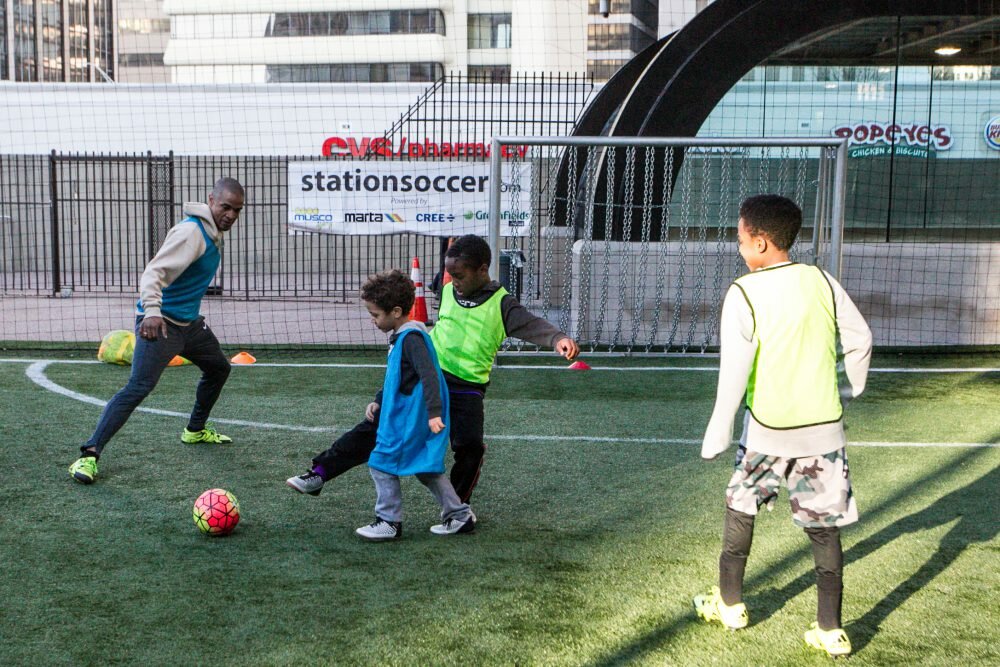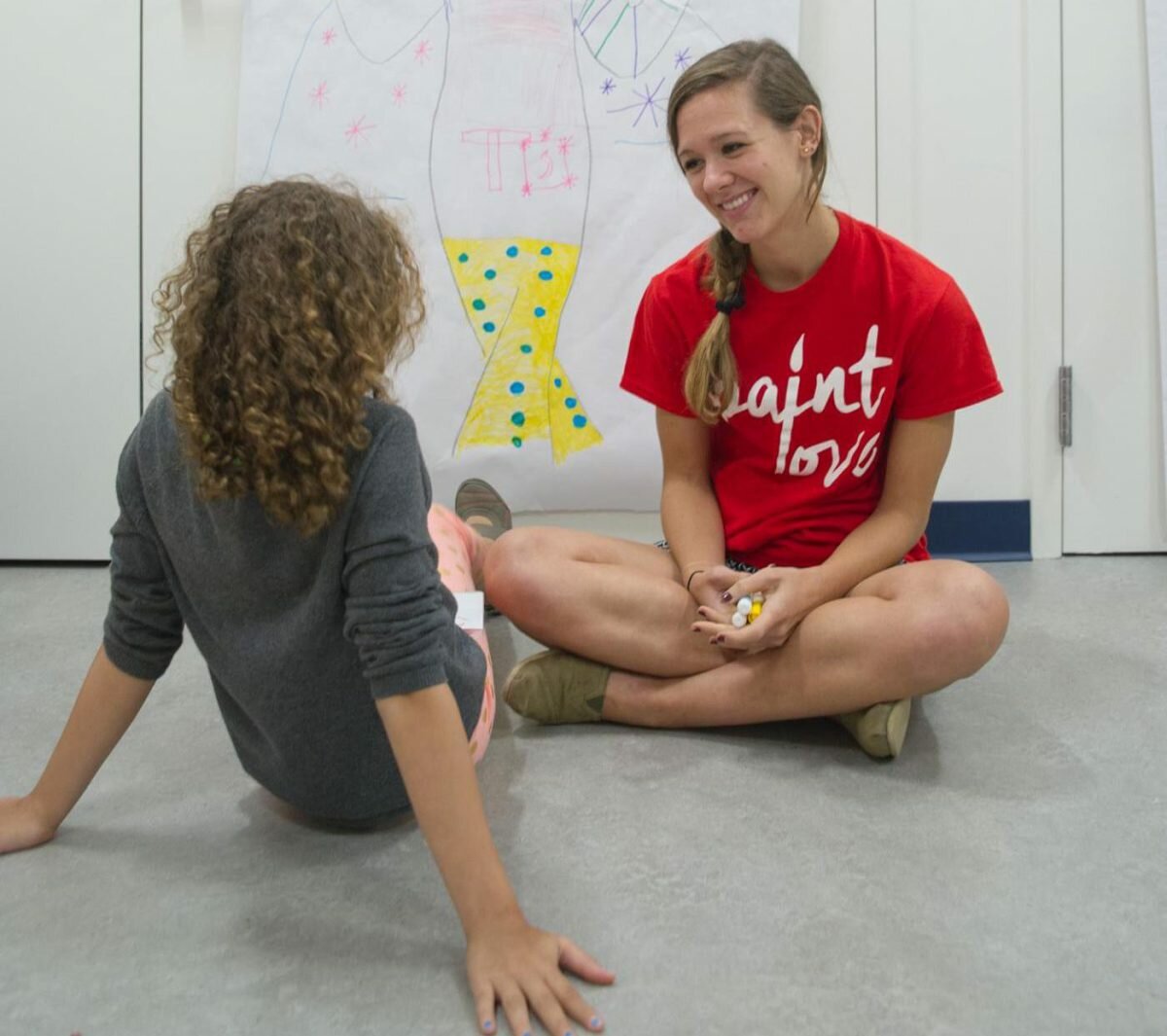
What do Akon, the Five Points MARTA station, and social equity all have in common? If your answer was ‘soccer,’ you are on the ball! Bringing the world’s most popular sport to Atlanta’s Five Points MARTA Station, Soccer in the Streets is changing the lives of children one goal at a time.
Thanks to the first grant awarded by the Atlanta United Foundation, Soccer in the Streets is scoring big with their transit meets ‘fútbol fusion.’ Executive Director, , kicked us over some knowledge on their goals and what’s next for Atlanta’s soccer revolution.
Tell us about Soccer in the Streets.
In 1989, Carolyn Mackenzie found out that soccer was a great way of guiding the youth of Jonesborough towards a positive lifestyle – or at least keeping them out of trouble. That mentality continues today, but we have greatly expanded even adding a life skills curriculum. During the initial stage of engagement, we host activation events in various communities or parks to get kids involved in soccer. The next level of our programming is a more organized form of play run through schools and community centers. From there, we create organized leagues and get the parents involved through coaching. Anyone can go out and get 5,000 kids to play soccer in a one-time festival, the hard part is keeping them on the field and giving them the opportunity to play continuously. It is even more challenging to then get those kids engaged in healthy lifestyle choices; however, that is precisely what we do.
 I have been involved with Soccer In The Streets since 1998 as volunteer and Board Chair. Last May I took over the Executive Director role because I was excited about the big changes happening in soccer across Atlanta.
I have been involved with Soccer In The Streets since 1998 as volunteer and Board Chair. Last May I took over the Executive Director role because I was excited about the big changes happening in soccer across Atlanta.
How is Soccer in the Streets changing with Atlanta?
Many things have changed in Atlanta which impacts what we are able to do. For example, the new Major League Soccer team, Atlanta United FC, is in town and the tide of soccer is rising with that. Soccer’s profile is rising across the board but most excitingly it’s going into communities where soccer has not been traditionally offered. Kids in African American neighborhoods are asking to play in big numbers and this was less the case five years ago. Funny enough, awareness of the sport has come in part due to things like Xbox FIFA and music stars who attach themselves to soccer because it’s cool. A lot of people make sweeping assumptions about soccer; they know Latino and refugee communities want it and think that African Americans don’t – which is just not true. It’s like African American communities are saying, ‘why do you think we don’t want you here? We do!’
The head injury issue with American football also comes up a lot. We hear it from schools and parents that they want a new alternative sport for their kids.
There is also greater attention being paid to girls in sports and providing them with constructive activities. One of the community centers we work with, Dunbar Community Center in Pittsburg, had virtually no girls in sports programs because they just offered basketball and football. They wanted something that would attract girls, which is a perfect fit for us since our programs are evenly split between boys and girls.
Tell us about your program with MARTA, Station Soccer.
One of the Soccer In The Streets board members had this idea to put soccer fields at MARTA. The very progressive management team at MARTA went along with it and we opened the world’s first soccer field in a train station. MARTA likes the idea of building community and green spaces around their stations; soccer was a great fit. We now have one field at Five Points which was funded by the Atlanta United Foundation and it’s going great.
We have found that transportation is the single biggest issue for low-income families interested in playing organized sports. Unless they can walk, they can’t get involved; soccer in America generally caters to middle and upper class kids with a pay-for-play model and a reliance on consistent transportation. Having soccer at MARTA unties the knot for one of the biggest obstacles families face and we look forward to continuing to remove that barrier.
The idea is not to build just one soccer field but to do this at 10 different MARTA stations. Our goal is to build green spaces at stations and to use it as a community hub for activities. Besides Five Points, the stations that will have soccer fields are all very residential. We want to use those stations to connect communities to a network of healthy living across the city while taking advantage of public transportation. This project has really grown a life of its own. People are drawn to the green space at Five Points and we are looking forward to seeing how people get engaged as we expand to new communities. We are looking forward to seeing how placing healthy lifestyles around transit impacts people all over the city.
 How can readers support Soccer in the Streets?
How can readers support Soccer in the Streets?
One initiative we are very excited about is running paid adult leagues on our fields. It helps to diversify our funding so we have consistency of service for our kids – and it’s also a lot of fun. All of the proceeds from those leagues go to fund our programming in the community around the field. We just launched four organized leagues and pick-up sessions at Five Points; we even have a lunchtime league for restaurant workers and are kicking off a league in which City of Atlanta departments play each other. We have had an incredible response to these leagues, so if you want to help us, come and be part of it. We have more information on our Station Soccer site. Come and join in!
We also host four fundraising soccer events throughout the year. Anyone can sign up to be on a team and then raise money to play in the game. It’s a very successful, engaging way for people to get involved in what we do. We are taking applications for our first corporate event, in which corporations can apply to participate in a tournament with employee team. Playing with us is a great way for people to enjoy soccer and do good at the same time.
Photos are property of Soccer in the Streets.

